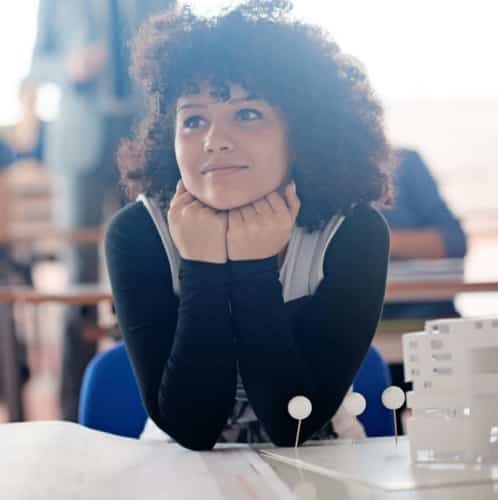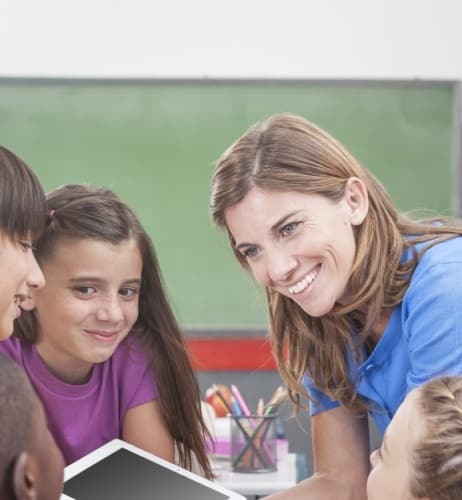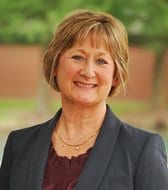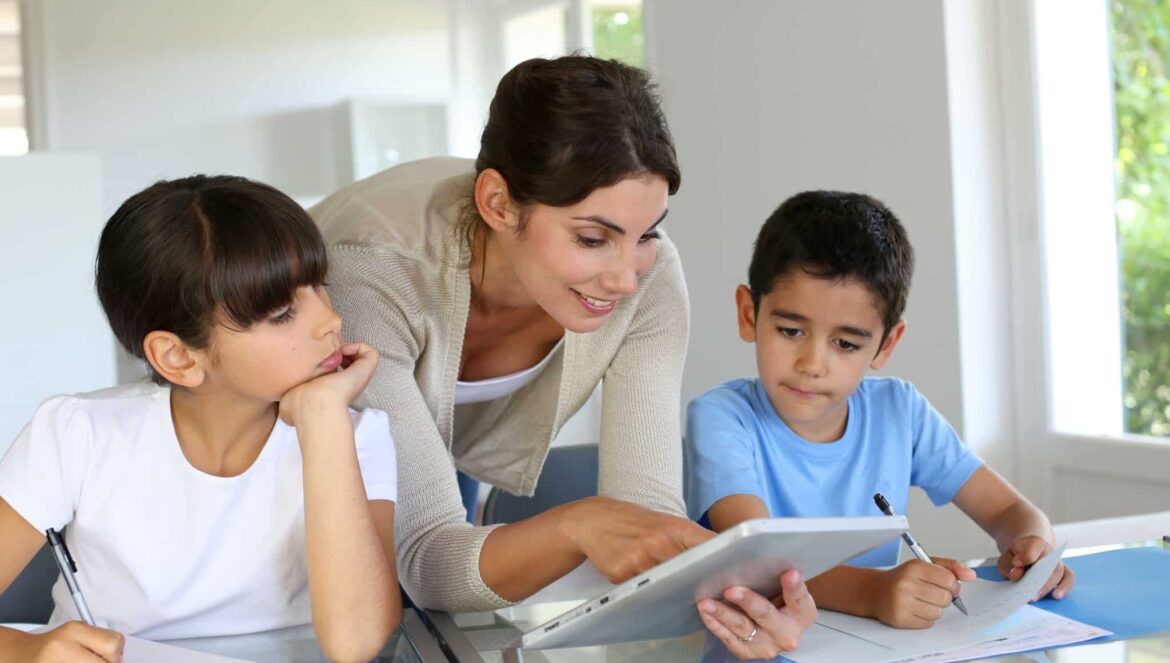Table of Contents
Leaders must support teachers in the use of technology
by Diane Mason and Kristi Meeuwse
Teacher Beliefs Incorporating Technology
Research has shown that beliefs guide teacher decisions and actions. Specifically, teacher beliefs play a key factor in the decision to integrate technology in the curriculum. For example, low self-efficacy, computer proficiency, and personal opinions regarding the value of technology integration to support learning affect the adoption of technology integration in the classroom. Consequently, it is important to build capacity based upon teacher knowledge, skills, and dispositions to change practice and support technology integration in the curriculum.
 For change to occur, teachers must be able to engage in critical self-evaluation of their own efficacy related to technology integration and determine how to make effective connections between teaching knowledge, content knowledge, and technical knowledge. Also, leaders must support teachers in the use of technology by establishing and building a culture for change.
For change to occur, teachers must be able to engage in critical self-evaluation of their own efficacy related to technology integration and determine how to make effective connections between teaching knowledge, content knowledge, and technical knowledge. Also, leaders must support teachers in the use of technology by establishing and building a culture for change.
TPACK and SAMR Models
The Technological Pedagogical Content Knowledge (TPACK) and Substitution, Augmentation, Modification and Redefinition (SAMR) models provide frameworks to help better understand the connections between technology integration and learning. The TPACK model offers a roadmap for meeting teacher professional development needs related to pedagogical knowledge, content knowledge, and technological knowledge.
Using surveys, teachers are able to rate themselves on various aspects of technology knowledge related to solving computer tech problems and using basic software types and peripheral digital equipment. In the pedagogical elements, teachers conduct self-ratings about student performance assessments, awareness of  learning difficulties, classroom management, and differentiated instruction. Survey questions related to content knowledge focus on key concepts in teaching areas, class activities, and inclusion of relevant resources. The intersection of the three domains (technological – how devices work and enhance learning; pedagogical knowledge – how students learn; and content knowledge – what students learn and why) of how teachers rate themselves is at the heart of where to begin expanding personalized professional learning.
learning difficulties, classroom management, and differentiated instruction. Survey questions related to content knowledge focus on key concepts in teaching areas, class activities, and inclusion of relevant resources. The intersection of the three domains (technological – how devices work and enhance learning; pedagogical knowledge – how students learn; and content knowledge – what students learn and why) of how teachers rate themselves is at the heart of where to begin expanding personalized professional learning.
With a better understanding of the three domains of TPACK and individual assessments of each, the SAMR model elements can then be used to develop meaningful technology infused lessons to address student needs. With a good understanding of TPACK, personal strengths, and areas needing enhancement, teachers can better design lessons at varied levels on the SAMR Model to meet learning goals. The four levels of SAMR serve as ways to enhance or transform instructional tasks using technology to change pedagogical practice and ultimately improve learning outcomes.
 Barriers to Pedagogical Change Incorporating Technology
Barriers to Pedagogical Change Incorporating Technology
Changing pedagogical practice to incorporate technology requires taking risks. When risk equates to reduced security or loss of some element deemed important or valuable, perceptions can become negative. Tech integration often dramatically deviates from traditional instructional approaches. Consequently, some teachers develop negative perceptions about its use due to barriers they view in the implementation process. So, they continue using traditional pedagogies because of personal insecurities with technology implementation due to limited skillsets or fearful change may lower test scores.
Typical key barriers to pedagogical change with technology discussed in professional literature are:
a) fear of being isolated or ostracized for implementing something different or taking risks that might affect test scores or force colleagues to change
b) unwillingness to observe colleagues in the classroom to support change and improve practice
c)elimination or reduction of instructional textbooks in the classroom
d) loss of control due to elevated student voice for increased engagement and personalized instruction in a student-centered classroom
e) overloaded instructional schedules reducing time to learn technology, create innovative plans, and implement new strategies.
 These barriers must be addressed in order to support changing practice and building a culture of trust, and an openness for risk-taking related to innovation, technology, and student-centered learning.
These barriers must be addressed in order to support changing practice and building a culture of trust, and an openness for risk-taking related to innovation, technology, and student-centered learning.
Innovative Pedagogies for Enhancing PPL
Blended and Flipped Learning
With the United States education budget reductions that have occurred, educational leaders are more strongly considering hybrid or blended learning models as an effective way to cut costs, provide resources, extend learning experiences, and increase class loads. Yet, some educators advocate engagement and learning outcomes, driving leaders toward virtual or hybrid learning. Others tout personalized learning, self-directed learning, and student engagement to motivate changing practice and embrace blended learning environments.
Blended learning approaches may be simply hybrids or strategies aligned with current instructional practices, but they could become more disruptive or innovative, thus challenging traditional classroom practice. Overall, face-to-face instruction seems to be morphing into digital and online opportunities to create blended learning experiences, but today’s blended learning approach doesn’t appear to have a single definition. Some interpretations of blended learning focus on hybrid learning (face-to-face and online), ICT, e-learning, 21st Century learning, digital learning, and mobile learning.
 Flipped learning, sometimes referred to as inverted learning, is often a teaching method which uses video lectures and other resources stored in online environments where students can access the materials from home or other locations. Then, the face-to-face classroom instruction includes engaging learning activities such as labs, case studies, games, simulations or experiments.
Flipped learning, sometimes referred to as inverted learning, is often a teaching method which uses video lectures and other resources stored in online environments where students can access the materials from home or other locations. Then, the face-to-face classroom instruction includes engaging learning activities such as labs, case studies, games, simulations or experiments.
To effectively implement the flipped approach, teachers often need ongoing professional learning experiences because the strategies differ from traditional practice in that digital tools and other technology-based resources are key elements of the instructional process. This engaging approach, when implemented effectively, has shown improved student outcomes in lower-performing populations and with girls motivated to learn science and ICT.
Collaborative Networking
Collaboration
Students engaged in collaborative activities seem more satisfied with coursework. Like cooperative learning, general collaborative strategies tend to develop critical thinking, incorporate self-reflection, and target increased metacognition (improved understanding of one’s thinking and learning). Positive, strong collaboration also builds a sense of community and results in greater student satisfaction. Research shows that deeper student learning happens when teachers plan activities that engage students in content that embeds collaborative technology instructional strategies. These practices also build confidence as well as needed content and skills at deeper levels.
 Peer-to-Peer Learning
Peer-to-Peer Learning
Peer-to-peer learning, sometimes referred to as peer-mediated instruction, involves students in tutoring, partner, or small group activities aimed at improved assignment completion and overall achievement. Also, peer-to-peer learning experiences offer opportunities for further practice and feedback in a different way. Some students particularly respond better with peers than adults. Research shows peer-to-peer interventions particularly assist students struggling with reading and writing in content areas. Incorporating technology as the tool for peer editing, revision and feedback helps direct students toward more self-management of determined areas of strength and those needing improvement.
Online Professional Learning Networks
The benefits of collaboration and connecting face-to-face have been well documented in the literature. In recent years, many teaching professionals find online collaborations and connections, often referred to as Professional Learning Networks (PLNs), equally beneficial to those in face-to-face experiences. An advantage to PLNs is the opportunity to personalize individual and collective experiences through connecting online via user-friendly tools. Educators are able to connect with colleagues of like mind to explore, create, examine, and produce products or solutions related to special interests, personal needs, or collective issues.
 For example, teachers use Twitter for international collaboration with educators to explore topics related to innovation and inquiries into what works for students. It helps to develop greater instructional capacity by hearing how others are using innovative instructional techniques to target student improvement. Other effective communication tools such as Google-Hangouts, Skype, Whatsapp, and Facebook engage individuals in on-going dialogue for personal and collective learning and professional growth.
For example, teachers use Twitter for international collaboration with educators to explore topics related to innovation and inquiries into what works for students. It helps to develop greater instructional capacity by hearing how others are using innovative instructional techniques to target student improvement. Other effective communication tools such as Google-Hangouts, Skype, Whatsapp, and Facebook engage individuals in on-going dialogue for personal and collective learning and professional growth.
Reflective Learning
Reflection is a critical component of experiential learning that engages learners in thinking, talking, and writing about learning experiences to result in new or different ways of thinking. When teachers implement reflective learning, students are able to engage in a process aimed at improving their learning. Likewise, practitioners can then reflect upon implementation of immediate activities and change processes or procedures as needed to enhance student learning. When adults and students reflect, the total learning process has a greater chance of being implemented at higher levels, thus, potentially improving overall student achievement.
Author
 Dr. Diane Mason is an Associate Professor in the Center for Doctoral Studies in Educational Leadership at Lamar University in Beaumont, TX and is the College of Education Director of Graduate Studies and Research. During her tenure at Lamar University, Dr. Mason has taught numerous online courses in Educational Leadership and Educational Technology Leadership.
Dr. Diane Mason is an Associate Professor in the Center for Doctoral Studies in Educational Leadership at Lamar University in Beaumont, TX and is the College of Education Director of Graduate Studies and Research. During her tenure at Lamar University, Dr. Mason has taught numerous online courses in Educational Leadership and Educational Technology Leadership.
In her current role in the online doctoral program, Dr. Mason works with an online team to lead a unique cohort of global distinguished educators. Her prior K-12 experience includes serving as a technology training center coordinator, teaching K-8 regular and special education, and leading as a middle school assistant principal and elementary principal.
During Dr. Mason’s tenure as a K-8 teacher, the National Foundation for the Improvement of Education (NFIE) recognized her as a Christa McAuliffe Fellow for innovative online and technology integration practices.
Also, she is the past president of the ISTE state affiliate, Louisiana Computer Using Educators, peer reviews journal articles for the National Council of Professors of Educational Administration, and is a member of the Lamar University Institutional Review Board. Research interests include online learning, technology integration, professional development, school improvement, and leadership.
Dr. Kristi Meeuwse is a veteran kindergarten teacher in Charleston, SC as well as an adjunct professor for Lamar University in their Digital Leading and Learning Master’s Degree program. As an Apple Distinguished Educator, Kristi travels extensively sharing her innovative early literacy practices incorporating iPads into instruction.
Kristi is the author of the popular blog iTeach With iPads, which is a chronological account of student voice and choice in demonstrating learning. She also authors leveled readers for her students to enhance literacy learning. Research interests include early literacy, technology integration, and professional development.
Further Reading
- John Jay – E-portfolios help John Jay students improve digital literacy
- Akron Beacon Journal – Learning software in classrooms earns praise, causes debate
- The Robesonian – Teachers get schooled on digital learning



 Barriers to Pedagogical Change Incorporating Technology
Barriers to Pedagogical Change Incorporating Technology